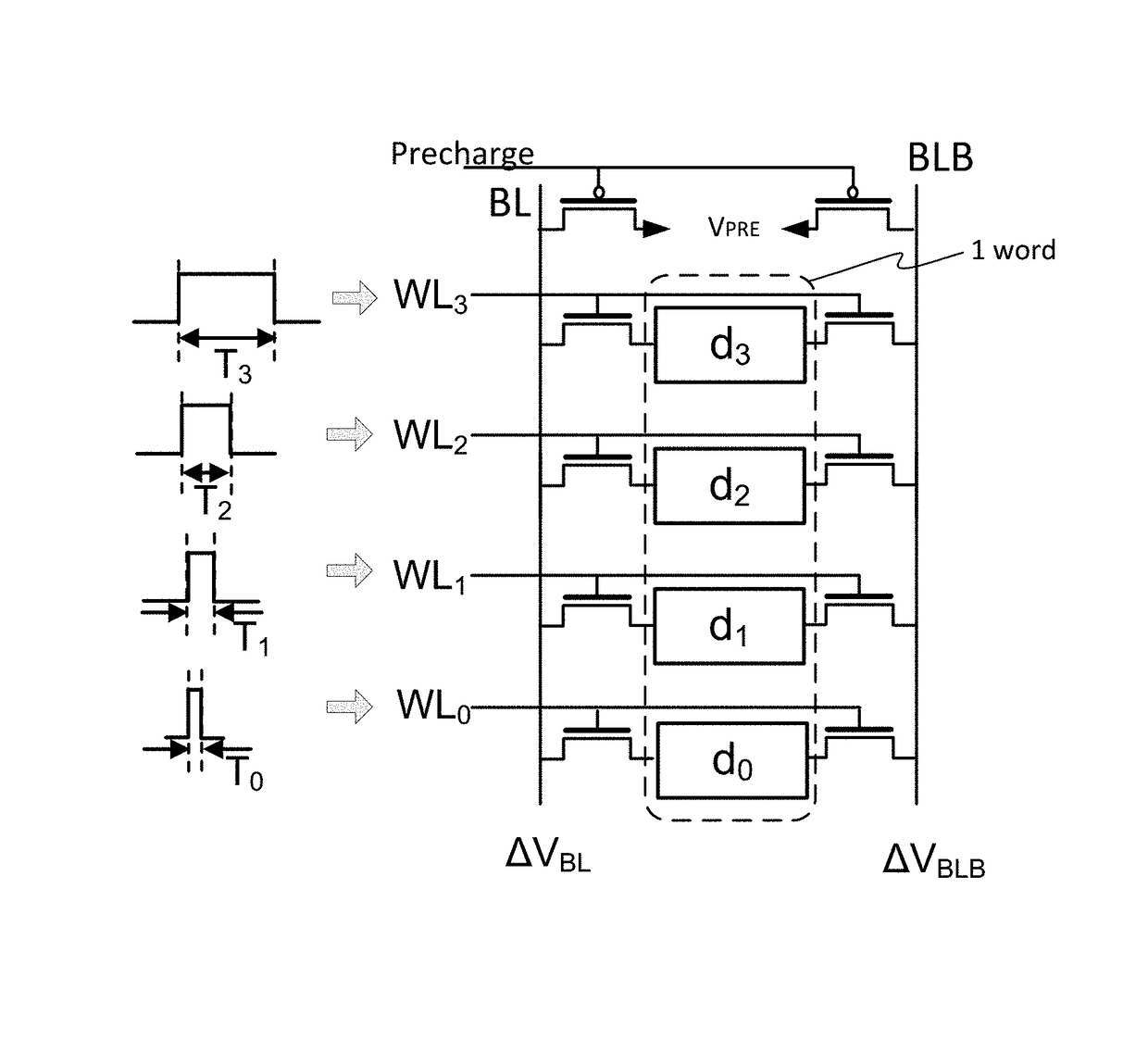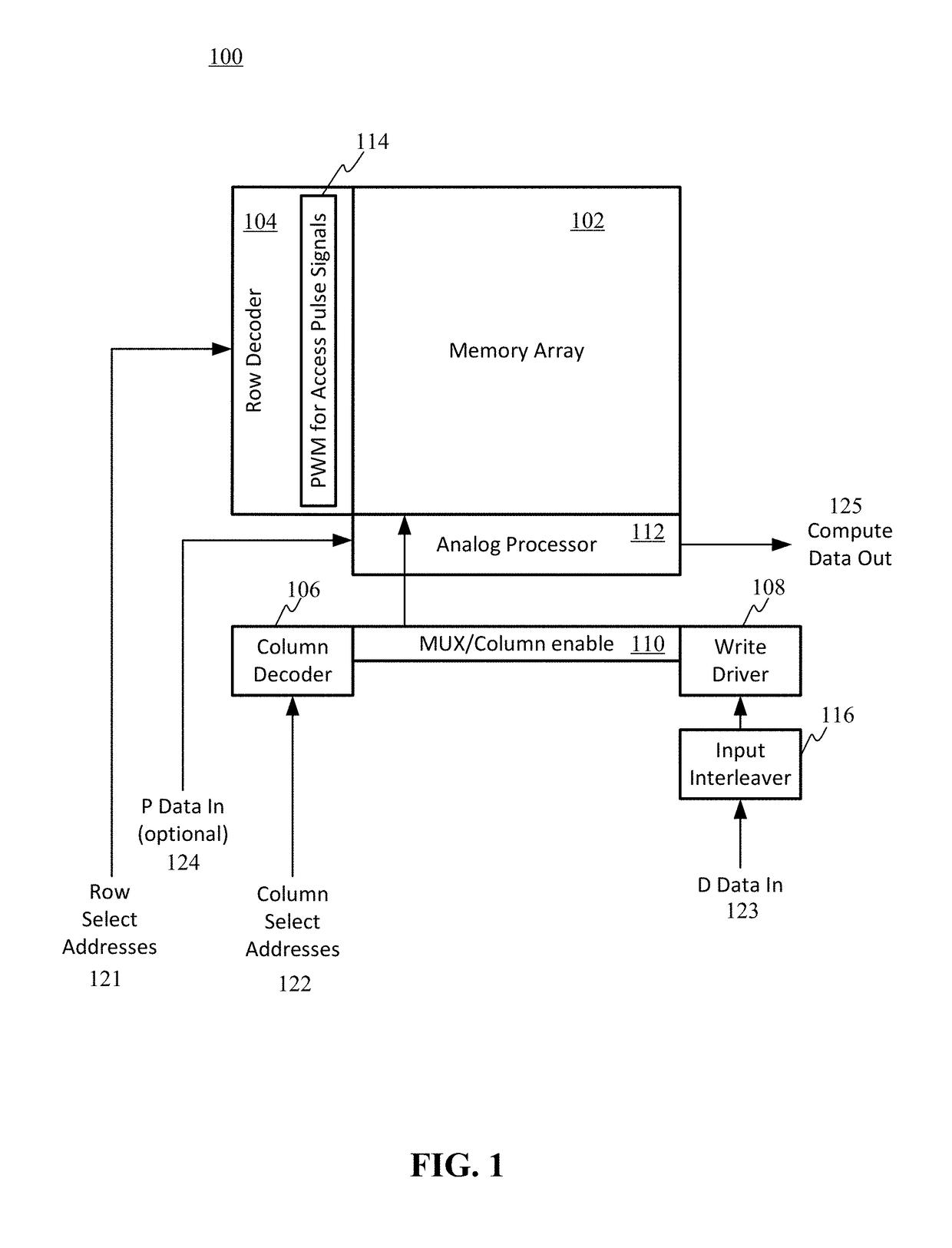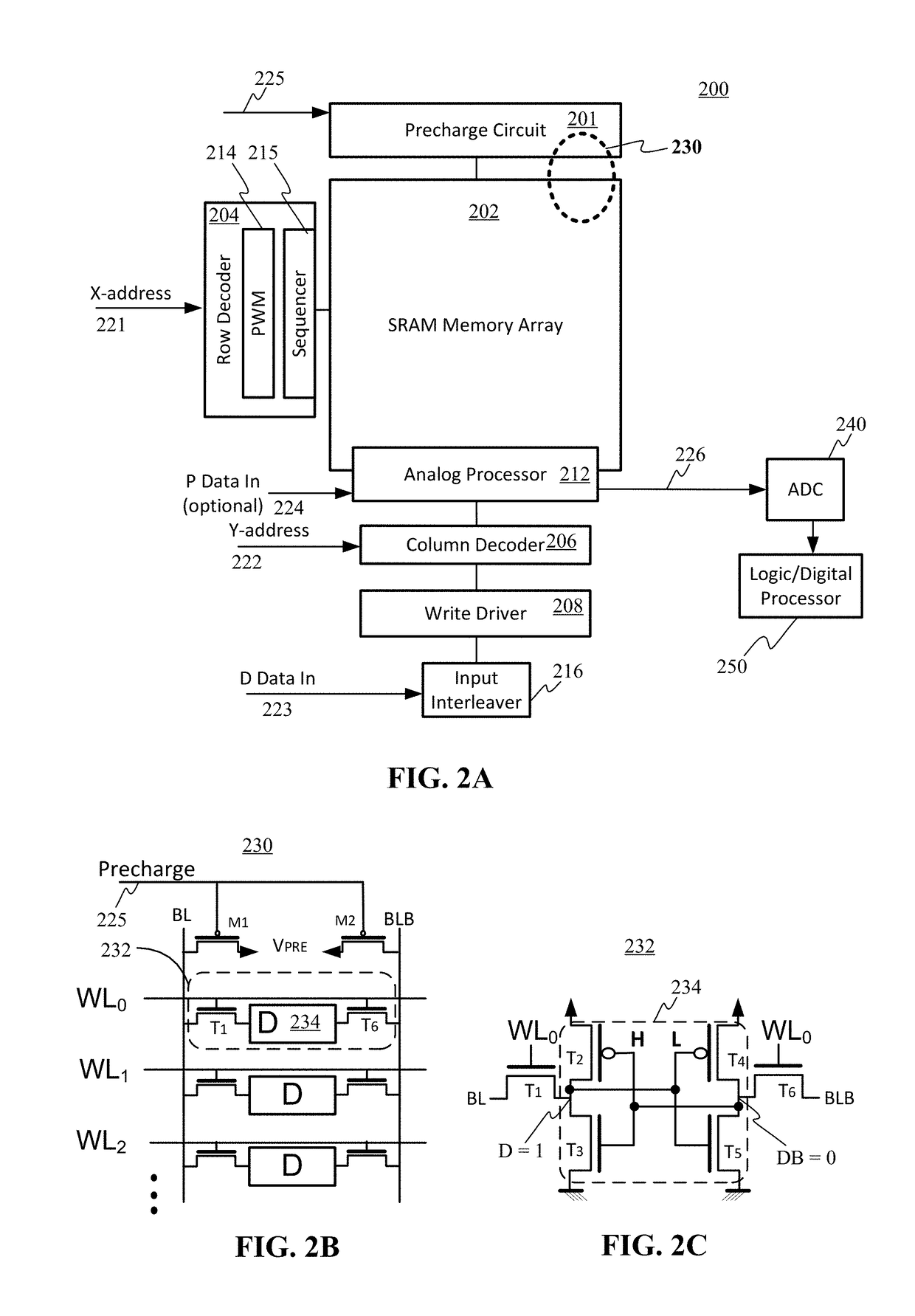Compute memory
a technology of compute memory and memory, applied in the field of compute memory, can solve the problems of limited system throughput, and achieve the effect of reducing delay, achieving energy efficiency, and avoiding delay and energy penalties
- Summary
- Abstract
- Description
- Claims
- Application Information
AI Technical Summary
Benefits of technology
Problems solved by technology
Method used
Image
Examples
Embodiment Construction
[0025]Compute memory systems and techniques are described. Compute memory utilizes a multi-row read configuration and embedded analog signal processing to perform computations including addition, subtraction, absolute, multiplication, inner product, division, and combinations thereof. The described systems can be application-specific, for example, a devoted inference kernel for pattern recognition, or part of a general purpose computing system that utilizes the compute memory system for a variety of computations.
[0026]FIG. 1 illustrates an implementation of a compute memory architecture. Referring to FIG. 1, a compute memory architecture 100 takes advantage of existing memory array architectures and their energy and design efficiencies by using any suitable highly dense memory array 102 such as a static random access memory (SRAM), flash, dynamic random access memory (DRAM), or even a phase change memory (PRAM) or resistive random-access memory (ReRAM), and the operating logic such ...
PUM
 Login to View More
Login to View More Abstract
Description
Claims
Application Information
 Login to View More
Login to View More - R&D
- Intellectual Property
- Life Sciences
- Materials
- Tech Scout
- Unparalleled Data Quality
- Higher Quality Content
- 60% Fewer Hallucinations
Browse by: Latest US Patents, China's latest patents, Technical Efficacy Thesaurus, Application Domain, Technology Topic, Popular Technical Reports.
© 2025 PatSnap. All rights reserved.Legal|Privacy policy|Modern Slavery Act Transparency Statement|Sitemap|About US| Contact US: help@patsnap.com



